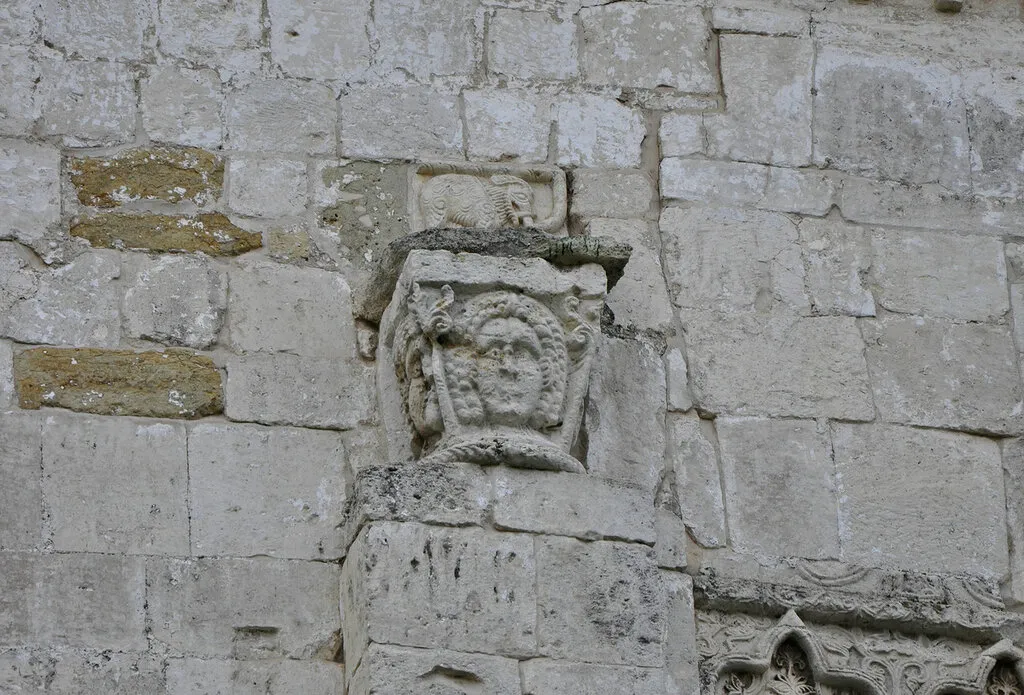It is ancient, unique, beautiful and it deserves to be told about it.

The history of this cathedral begins in 1152, when the Moscow prince Yuri Dolgoruky, in a newly built fortress, erects a temple in honor of his heavenly patron.

In 1230, the grandson of Yuri Dolgoruky Svyatoslav III Vsevoldovich, having risen to reign in Yuryev-Polsky, dismantled the grandfathers' temple (the chronicle claims that he did this because the temple was dilapidated and began to collapse) and in its place by 1234 he erected a new white-stone church, decorating its walls from top to bottom with rich carvings.

The carving included decorative ornament and plot compositions and, in general, carried within itself "the idea of Divine patronage of the Vladimir-Suzdal land and its princes. ''



This temple was the last work of the masters of the Vladimir-Suzdal school of white stone architecture in the pre-Mongol period.

Having survived the Tatar-Mongol invasion, the temple collapsed in 1445. The architect Vasily Ermolin was sent from Moscow to restore it.
During the restoration work, Yermolin tried to use the surviving stones and even tried to fit them according to the carving pattern, but he did not succeed in putting this puzzle together. As a result, the temple became lower, squat, and the whole system of drawing was lost forever. Now the walls of St. George's Cathedral are a real puzzle for specialists and they just can't decipher what stories the white stone carving told.

In the 19th century, the interior walls of the cathedral were painted with frescoes, one of which is very similar to the "Last Supper" by Leonardo da Vinci.
The cathedral was painted by the peasant Timofey Medvedev from the village of Teikova in 1826.

In 1923 the cathedral was closed. For some time it was used as a warehouse, and later the temple was included in the Yuryev-Polsky Historical, Architectural and Art Museum.
Services are occasionally held in the temple.
The main shrine of the temple is the miraculous Svyatoslav cross. The story goes that this cross was made by Svyatoslav III Vsevoldovich in memory of his miraculous rescue during a campaign against the Volga Bulgarians, when the princes' boats fell into a strong storm.

The cross survived the years of fighting against God thanks to the museum staff - it was taken from the cathedral and kept in the Mikhailo-Arkhangelsk monastery as a museum exhibit. Nowadays, believers have the opportunity to pray and venerate the shrine.
Also in the cathedral you can see ancient carved stones, which were once an integral part of the old cathedral and which were not useful during restoration work:

And, of course, the famous elephant among tourists. It's an unforgivable sin to come to Yuryev-Polsky and not try to find an elephant among the intricate patterns of the temple walls!

There is a sign among tourists - whoever finds an elephant on their own can make a wish and it will certainly come true.
Unfortunately, I did not find the elephant on my own, I resorted to the help of the all-knowing Internet. But I made a wish. And it came true!
Thank you all for your attention, comments and supervision!
P.S.:To translate the text into English, I used Google translator. I am sorry for possible mistakes
[//]:# (!pinmapple 56.492449 lat 39.668888 long d3scr)
